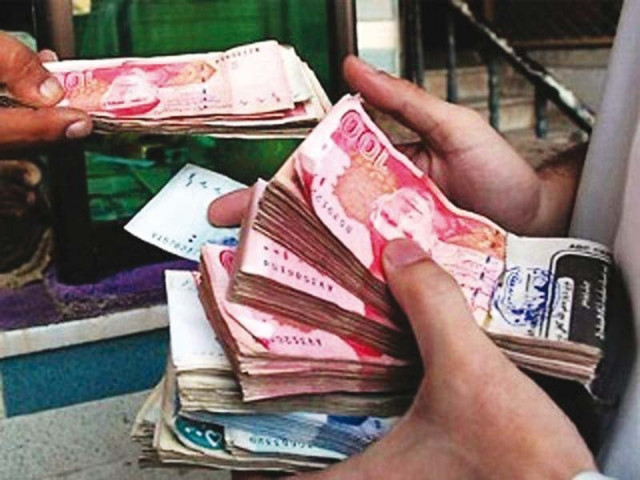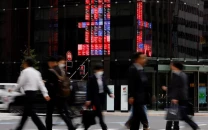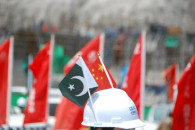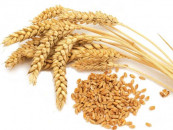Banks' profits to drop 14% QoQ
Earnings likely dip in 2QCY25 despite deposit surge to Rs35 trillion

Pakistan's banking sector is expected to report a subdued financial performance for the second quarter of 2025 (2QCY25), with profitability likely to decline by around 1% year-on-year (YoY) and 14% quarter-on-quarter (QoQ) for major banks following a drop in yields and a 100-basis-point (bps) cut in policy rate by the State Bank in May.
"We estimate profitability of ISL coverage banks – HBL, UBL, MCB Bank, Meezan Bank and Bank Alfalah – to decline by 1% YoY and 14% QoQ," noted Insight Securities. "The decline is primarily attributable to the falling yield, resulting in net interest margins (NIMs) compression along with moderation in capital gains."
Additionally, non-markup income is projected to decline due to normalisation of capital gains, which were elevated in the previous quarters.
Despite margin pressures, some support to earnings is expected from volumetric growth and a stronger focus on mobilising zero-cost deposits. Banks are also expected to maintain healthy dividend payouts, aided by decent profitability and strong capital buffers.
According to estimates, HBL, UBL, MCB Bank, Meezan Bank and Bank Alfalah are projected to post earnings per share (EPS) of Rs9.5, Rs11.3, Rs9.9, Rs11.4 and Rs4.9, respectively. Dividend per share (DPS) forecasts for the same banks stand at Rs4.5, Rs7, Rs9, Rs7 and Rs2.5, with UBL likely to stand out due to robust earnings and above-average deposit growth.
Sector-wide trends show banking deposits reaching Rs35 trillion, marking a significant increase of 12.5% YoY and 10.7% QoQ. Notably, a sharp 7% week-on-week growth was observed in the latest data.
However, advances declined 4.1% QoQ to Rs12.9 trillion, pulling down the sector's advances-to-deposit ratio (ADR) by roughly 570 bps. On the other hand, investments grew 12.8% QoQ to Rs36.5 trillion, reflecting continued preference for government securities, while borrowings remained stable at around Rs14.8 trillion.
Provisioning expenses are expected to rise sequentially, reversing the trend from the previous quarter, when banks booked reversals after trimming advances to meet end-of-year ADR thresholds. Despite the uptick in provisioning, the sector's overall financial health remains sound and banks are expected to continue rewarding shareholders with steady dividends.
However, Topline Securities expects banks under its coverage – Bank Alfalah, Bank AL Habib, HBL, MCB Bank, Meezan Bank and UBL – to post 7% YoY earnings growth in 2Q2025, led by higher net interest income (NII) and non-interest income. Despite a drop in average policy rate from 21.5% to 11.3%, NII is projected to rise 12% YoY to Rs303 billion, supported by strong deposit growth and higher returns on older investments.
Non-interest income is expected to grow 14% YoY to Rs84 billion, driven by increased fee income and gains on securities. Expenses are forecast to rise 8% YoY to Rs161 billion, in line with inflation and branch expansion. Provisions are likely to jump up to Rs9.1 billion from Rs5.9 billion last year.
Among individual banks, UBL is projected to lead with 148% YoY earnings growth, followed by HBL with 4% growth. However, sector earnings are expected to decline 5% QoQ due to lower NII and higher provisions, noted Topline.
For 1H2025, cumulative earnings are estimated at Rs210 billion, up 10% YoY. Dividend payouts are expected to remain strong, with UBL's DPS likely rising to Rs8 from Rs5.5 in the previous quarter. Topline maintains a market-weight stance on the sector, with HBL and Bank Alfalah being preferred picks.
Meanwhile, after hitting decade-low levels, Pakistan's banking sector has witnessed a strong and consistent rebound in its price-to-book (P/B) ratio since late 2023, reflecting improved investor sentiment and sector performance, according to Optimus Capital Management.
As of June 2025, the sector's P/B ratio climbed to 1.24 times, crossing its historical average and median of 1.0 times for the first time in years. The recovery signals growing investor confidence, underpinned by strong profitability metrics, stabilising macroeconomic conditions and a more favourable interest rate environment.
The rebound marks a sharp reversal from the sustained downward trend seen over the past decade, which was driven by inflationary pressures, regulatory tightening and macroeconomic uncertainty.



















COMMENTS
Comments are moderated and generally will be posted if they are on-topic and not abusive.
For more information, please see our Comments FAQ